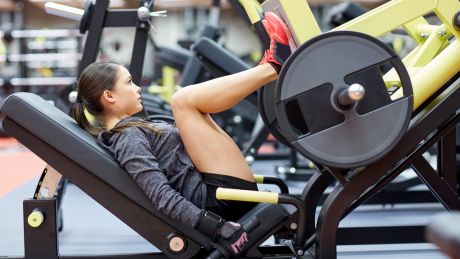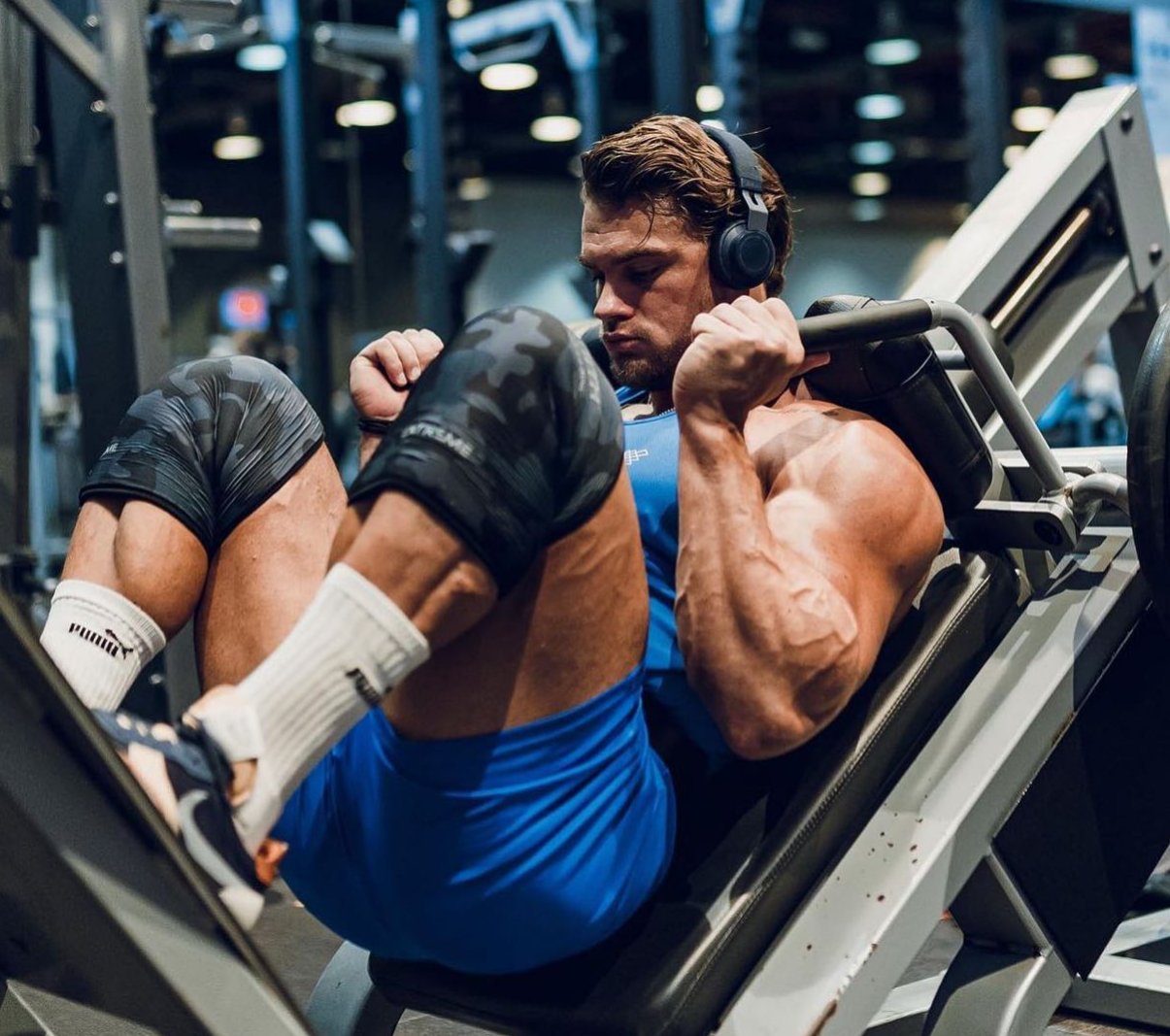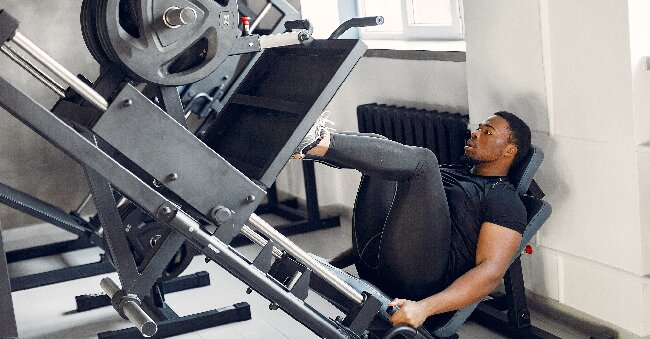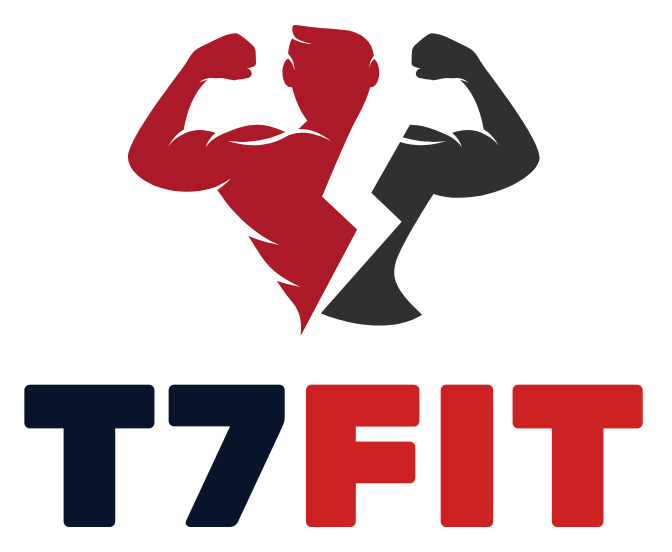The leg press machine is effective for building lower body strength. It targets quadriceps, hamstrings, and glutes efficiently.
The leg press machine offers a solid workout for those looking to enhance lower body strength. This equipment targets key muscle groups like quadriceps, hamstrings, and glutes. It’s suitable for beginners and advanced fitness enthusiasts. Proper form is crucial to maximize benefits and prevent injury.
The leg press machine allows users to adjust the weight, making it versatile for various fitness levels. It also provides a safer alternative to squats for those with back issues. Incorporating the leg press into your routine can help you achieve balanced muscle development and increased lower body strength.
Introduction To Leg Press Machine
The leg press machine is a staple in gyms. It targets the lower body muscles. This machine is perfect for strength training. It is easy to use and effective.
Leg Press Basics
The leg press machine consists of a seat and a platform. You push the platform away using your legs. It works on your quadriceps, hamstrings, and glutes. Adjust the seat for proper alignment and comfort.
- Place your feet shoulder-width apart.
- Keep your back flat against the seat.
- Push the platform away slowly and steadily.
- Return to the starting position with control.
Why Choose Leg Press
Leg press machines are popular for several reasons:
| Benefit | Description |
|---|---|
| Safety | Less risk of injury compared to free weights. |
| Isolation | Targets specific leg muscles effectively. |
| Ease of Use | Simple to operate even for beginners. |
These reasons make the leg press machine a great choice. It is suitable for all fitness levels.

Credit: www.coachmag.co.uk
Leg Press Vs. Squats
The debate between the leg press machine and squats is common among fitness enthusiasts. Both exercises target the legs but have distinct benefits and safety considerations. Let’s explore these differences under various aspects.
Comparing Benefits
The leg press machine offers a stable environment. This stability allows users to lift heavier weights without worrying about balance. It focuses on the quadriceps, hamstrings, and glutes.
Squats, on the other hand, provide a full-body workout. They engage the core, back, and even the upper body. This makes squats highly effective for overall strength.
| Exercise | Main Muscles Worked | Additional Benefits |
|---|---|---|
| Leg Press | Quadriceps, Hamstrings, Glutes | Less strain on the back, More weight lifted |
| Squats | Quadriceps, Hamstrings, Glutes | Core activation, Improved balance |
Safety Considerations
The leg press machine minimizes the risk of injury. It does so by providing back support. This makes it ideal for beginners or those with back issues.
Squats require proper form to avoid injuries. Incorrect form can lead to knee, back, or hip problems. Always practice squats with a trainer if you are new.
Here are some safety tips for both:
- Warm up before any exercise.
- Use proper footwear for support.
- Start with lighter weights to master the form.
Final Thoughts
Both exercises have unique benefits and safety considerations. Choose based on your fitness level and goals. Consult a trainer for personalized advice.
Muscles Targeted
The leg press machine is a powerful tool for strengthening the legs. It targets several key muscle groups, making it a popular choice for leg workouts. This section will detail the primary and secondary muscles worked by the leg press machine.
Primary Muscles
The primary muscles targeted by the leg press machine include:
- Quadriceps: These are the muscles at the front of your thighs. They extend your knees.
- Gluteus Maximus: This muscle is located in your buttocks. It helps with hip extension.
- Hamstrings: Found at the back of your thighs, these muscles assist in knee flexion and hip extension.
Secondary Muscles
The leg press machine also engages several secondary muscles:
- Calves: These muscles, located at the back of your lower legs, help with ankle flexion.
- Adductors: These inner thigh muscles assist with stabilizing your legs during the press.
- Core: Your core muscles stabilize your body during the exercise.
| Muscle Group | Primary Function |
|---|---|
| Quadriceps | Knee Extension |
| Gluteus Maximus | Hip Extension |
| Hamstrings | Knee Flexion, Hip Extension |
| Calves | Ankle Flexion |
| Adductors | Leg Stabilization |
| Core | Body Stabilization |
Understanding the muscles targeted can help you maximize your workout benefits. Focus on proper form to engage these muscles effectively.

Credit: www.youtube.com
Proper Technique
The leg press machine can be a powerful tool in your fitness routine. Using proper technique enhances effectiveness and reduces injury risk. Let’s explore the essential aspects of proper technique.
Foot Placement
Your foot placement on the leg press machine impacts your workout. Different placements target different muscles. Position your feet shoulder-width apart for balanced muscle engagement.
For focusing on the quads, place your feet lower on the platform. To engage the hamstrings and glutes, position your feet higher. Remember to keep your heels flat on the platform to maintain stability.
Use the table below for a quick reference:
| Foot Position | Muscle Targeted |
|---|---|
| Lower Platform | Quads |
| Higher Platform | Hamstrings and Glutes |
| Shoulder-Width Apart | Balanced Engagement |
Range Of Motion
A proper range of motion is crucial for maximizing your leg press workout. Lower the platform until your knees form a 90-degree angle. Avoid locking your knees when extending your legs. This prevents joint strain and keeps tension on your muscles.
Follow these steps for the correct range of motion:
- Sit comfortably with your back against the pad.
- Place your feet on the platform as desired.
- Lower the platform until knees are at 90 degrees.
- Extend your legs without locking your knees.
Maintaining a controlled, steady movement helps prevent injuries and improves muscle engagement.
Common Mistakes
The leg press machine can be a game-changer for your leg workouts. But many people use it incorrectly. Common mistakes can lead to injuries or less effective workouts. Let’s dive into some of these common errors.
Incorrect Form
Incorrect form is one of the most frequent mistakes. Keeping your back flat against the seat is crucial. Do not arch your back. An arched back can cause injuries. Your feet should be shoulder-width apart. Keep your knees in line with your toes. Avoid locking your knees at the top of the press. This can put unnecessary strain on your joints.
Overloading Weight
Overloading weight is another common mistake. Many people load too much weight on the machine. This can lead to poor form and injuries. It’s important to start with a manageable weight. Gradually increase the weight as you get stronger. Use a weight that allows you to complete the set with good form. Avoid using momentum to push the weight. Focus on controlled movements to engage the muscles properly.

Credit: gunsmithfitness.com
Incorporating Into Workout
The leg press machine is a staple in many gyms. It is known for targeting the lower body. Using it wisely can enhance your workout. Below, we discuss how to incorporate it effectively.
Leg Day Routine
On leg day, the leg press machine can be a game-changer. Start with a warm-up. A few minutes on the treadmill will do. Next, move to the leg press machine.
- Begin with lighter weights.
- Perform 3 sets of 10-12 reps.
- Gradually increase the weight with each set.
Ensure your back stays flat against the seat. Keep your feet shoulder-width apart. This position targets the quads, hamstrings, and glutes.
Balancing With Other Exercises
Balance is key in any workout routine. The leg press should not be the only exercise. Mix it with other exercises to achieve overall leg strength.
| Exercise | Target Area |
|---|---|
| Squats | Quads, Glutes |
| Lunges | Hamstrings, Calves |
| Deadlifts | Glutes, Lower Back |
Incorporate these exercises on leg day. They provide a comprehensive workout. Aim for 3 sets of each exercise. Perform 10-12 reps per set.
Remember to rest between sets. Resting allows muscles to recover. Also, hydrate well during your workout. Proper hydration boosts performance.
Benefits Of Leg Press
The leg press machine is a staple in many gyms. This machine helps strengthen the legs. It offers various benefits that improve your fitness journey. Below are some key benefits of using the leg press machine.
Strength Gains
The leg press machine helps in building muscle strength. It targets the quadriceps, hamstrings, and glutes. This machine allows you to lift heavy weights safely. As you increase the weight, your muscles grow stronger. Consistent use can lead to significant strength gains.
| Muscle Group | Benefit |
|---|---|
| Quadriceps | Increased Power |
| Hamstrings | Better Stability |
| Glutes | Enhanced Strength |
Injury Prevention
The leg press machine can help in preventing injuries. It offers a controlled movement range, reducing the risk of injury. The machine supports your back and hips, keeping them aligned. This alignment helps prevent undue stress on your joints.
- Controlled Movement
- Back Support
- Hip Alignment
Using the machine can also strengthen the muscles around your knees. Strong muscles help protect your joints from injuries.
Overall, the leg press machine is an effective tool. It boosts strength and helps prevent injuries.

Credit: nutroone.com
Frequently Asked Questions
Is The Leg Press Machine Worth Doing?
Yes, the leg press machine is worth doing. It effectively targets leg muscles, improves strength, and enhances lower body performance.
Are Leg Presses As Good As Squats?
Squats are generally more effective than leg presses. Squats activate more muscle groups, improve balance, and enhance functional strength.
Can You Build Legs With Just Leg Press?
Yes, you can build leg muscles with leg press exercises. Combine it with squats and lunges for best results.
What Is The Downside Of Leg Press?
Leg press can strain the lower back and knees. It may cause muscle imbalances and doesn’t fully engage stabilizing muscles.
Conclusion
The leg press machine offers a safe and effective workout for building lower body strength. It supports muscle growth and improves endurance. Integrate it into your routine for balanced fitness. Always consult a fitness professional to ensure proper form and maximize benefits.
Stay consistent and enjoy the results.
